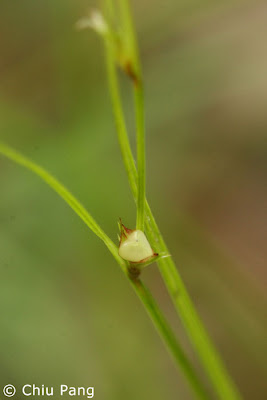

 Eleocharis (Cyperaceae) is a large genus comprised of about 200 species. Most of them are widely distributed in the tropical and subtropical regions over the world. Their very broad geographical range might probably attribute to wind-pollination and wind-dispersal mechanisms, which are particularly efficient in open and windy habitats that most of the members inhabit. No leaf blade can be found in the genus where only shealth is present which is a major characteristic for the genus.
Eleocharis (Cyperaceae) is a large genus comprised of about 200 species. Most of them are widely distributed in the tropical and subtropical regions over the world. Their very broad geographical range might probably attribute to wind-pollination and wind-dispersal mechanisms, which are particularly efficient in open and windy habitats that most of the members inhabit. No leaf blade can be found in the genus where only shealth is present which is a major characteristic for the genus.Eleocharis geniculata is uncommon in Hong Kong. Their abundance might be confined by limited suitable habitat which mainly inhabit coastal wetlands. Identification of it is easy by identifying three major characters:
- Spickelets are broader than culm (shown in 1st photo);
- Stigma is bifid (shown in 3rd photo);
- Nuts are blackish, of about 1 mm long with 6-8 hypogynous bristles (shown in 3rd photo).







